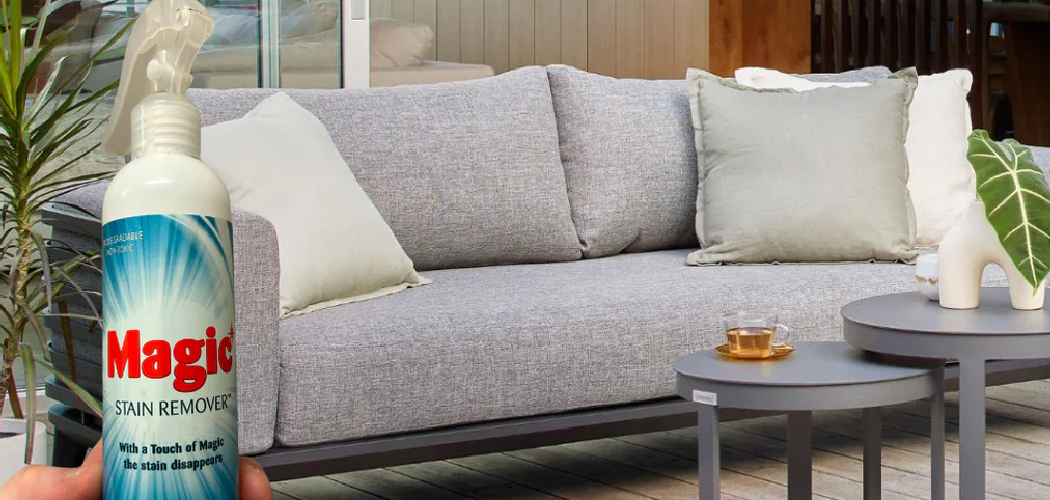Mold on a fabric sofa is not just an unsightly problem; it poses significant health risks, particularly to those with allergies or respiratory issues. Tackling mold growth promptly and effectively is crucial to maintaining a healthy living environment and preserving the integrity of your furniture. Understanding how to remove mold from fabric sofa involves a careful approach to ensure the fabric is thoroughly cleaned without causing damage.
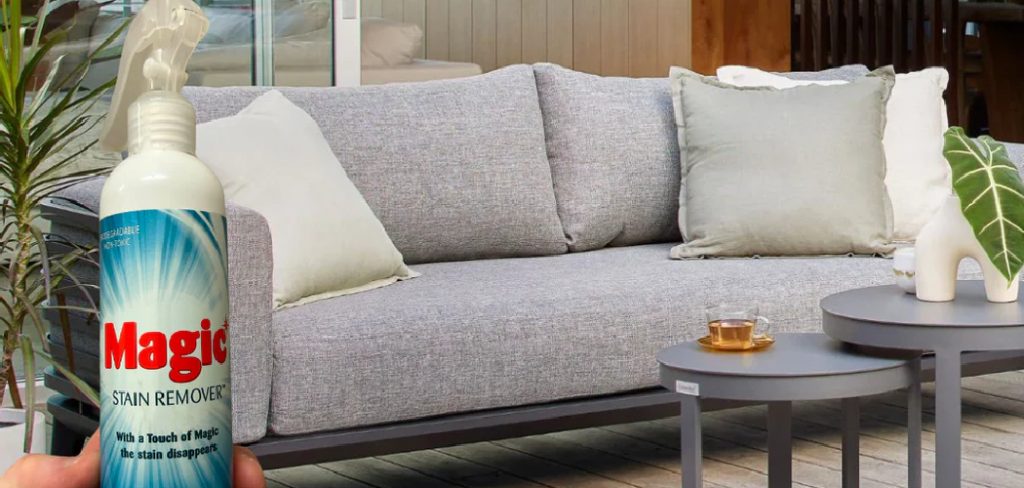
This process typically includes identifying the extent of the mold infestation, using appropriate cleaning solutions, and employing techniques that both eliminate the mold and prevent its recurrence. Additionally, it is vital to address the underlying causes of mold growth, such as excess moisture and poor ventilation, to prevent future outbreaks.
This guide will provide detailed steps and tips for safely and effectively removing mold from your fabric sofa, ensuring it remains a safe and comfortable centerpiece in your home. From natural remedies to commercial cleaners, learn how to restore your sofa to its original, mold-free condition.
Reasons for Fabric Sofa Getting Mold
Understanding why mold forms on your fabric sofa is essential for both prevention and treatment. Several factors contribute to the growth of mold on upholstered furniture:
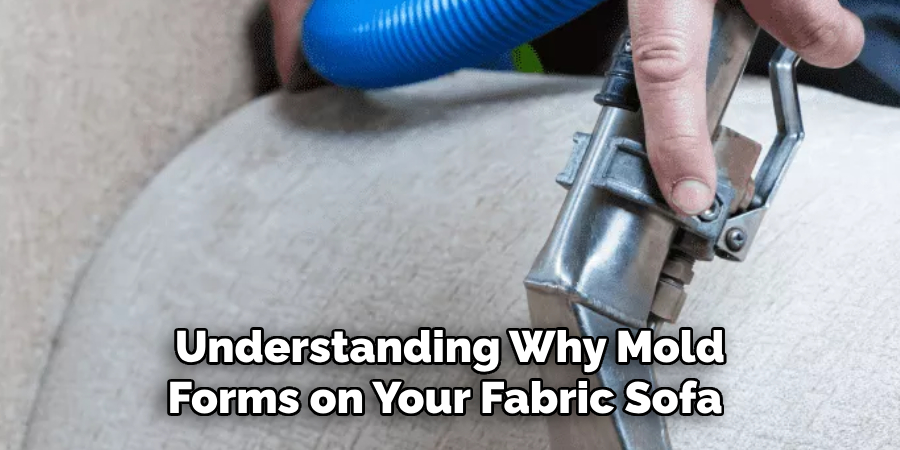
- Humidity and Moisture: Mold thrives in damp environments. High humidity levels or exposure to moisture can create the perfect breeding ground for mold. Spills, pet accidents, or even sweat can introduce moisture that gets absorbed by the fabric and cushions, leading to mold growth if not promptly dried.
- Poor Ventilation: Insufficient airflow within a room can cause stagnant air and increased humidity, fostering an environment conducive to mold. Fabrics that are not allowed to breathe and dry out regularly are more susceptible to mold.
- Organic Matter: Dirt, dust, and other organic matter that accumulate on a sofa can serve as a food source for mold. Regular cleaning is necessary to remove these particles, which can otherwise promote mold growth.
- Water Damage: Leaks or flooding can cause significant water damage to furniture. If the fabric sofa is not dried thoroughly after such incidents, mold can quickly develop in the damp conditions.
- Dark Environments: Mold tends to grow in dark, shaded areas. If your sofa is placed in a room that receives little sunlight, the lack of natural light can create an ideal environment for mold to flourish.
10 Methods How to Remove Mold from Fabric Sofa
1. Identifying the Mold
Before taking action, it’s essential to accurately identify the presence of mold on your fabric sofa. Mold often appears as dark or discolored spots and may be accompanied by a musty odor. Mold can come in various colors, including black, green, white, or yellow.
Identifying the affected areas will help you determine the extent of the mold growth and choose the appropriate cleaning method. If the mold has penetrated deep into the fabric or affected a large area, you may need to consider professional cleaning services. Understanding the type and severity of the mold infestation is the first crucial step in effectively addressing the problem.
2. Vacuuming the Sofa
Vacuuming the sofa is an essential initial step to remove loose mold spores and prevent them from spreading during the cleaning process. Use a vacuum cleaner with a HEPA filter to ensure that mold spores are captured and not released back into the air.
Attach an upholstery brush to gently vacuum the entire surface of the sofa, paying special attention to seams, crevices, and underneath cushions where mold tends to accumulate. This step helps in reducing the amount of mold before applying any cleaning solution, making the subsequent cleaning processes more effective.
3. Using a Mild Detergent Solution
A mild detergent solution is effective for cleaning mold from fabric sofas without causing damage to the material. Mix a small amount of liquid detergent with warm water to create a soapy solution. Dampen a clean cloth or sponge with the solution and gently blot the affected areas.
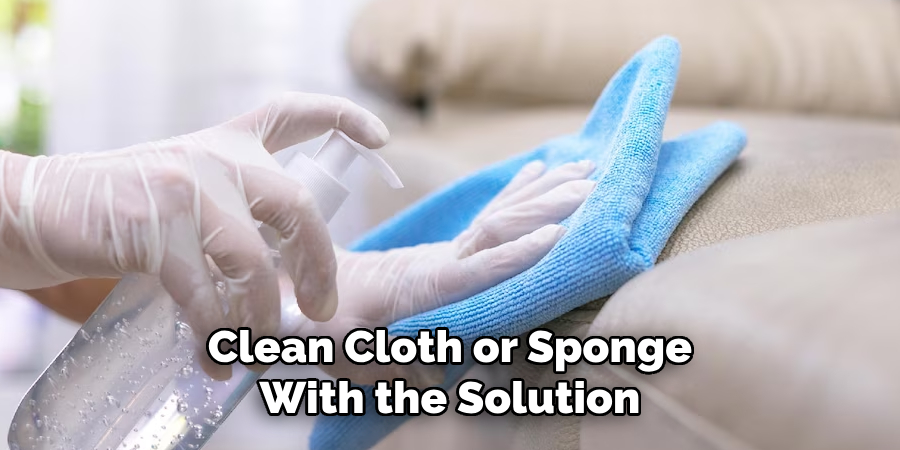
Avoid soaking the fabric, as excessive moisture can lead to further mold growth. Blot the area until the mold spots are removed, then rinse the cloth or sponge with clean water and blot the area again to remove any soap residue. Allow the sofa to air dry completely in a well-ventilated area to prevent moisture buildup.
4. Applying White Vinegar
White vinegar is a natural and effective mold-killing agent due to its acidic properties. To use vinegar, pour undiluted white vinegar into a spray bottle and lightly mist the affected areas. Allow the vinegar to sit for at least an hour to penetrate and kill the mold. Afterward, use a clean cloth to blot the area and remove any remaining mold. The smell of vinegar will dissipate as it dries, leaving your sofa fresh and clean. This method is particularly useful for eliminating mold spores and preventing their recurrence.
5. Hydrogen Peroxide Treatment
Hydrogen peroxide is another potent mold-fighting agent that can be used on fabric sofas. It is effective in killing mold and removing stains caused by mold growth. To use, mix one part hydrogen peroxide (3% concentration) with three parts water in a spray bottle.
Lightly spray the affected areas and let the solution sit for about 10-15 minutes. Blot the area with a clean cloth to remove the mold and excess moisture. Hydrogen peroxide is also a bleaching agent, so it is advisable to test it on a small, inconspicuous area first to ensure it does not discolor the fabric. This treatment helps to sanitize the fabric and eliminate mold spores.
6. Baking Soda Solution
Baking soda is a gentle yet effective mold remover that also helps neutralize odors. To create a baking soda solution, mix one tablespoon of baking soda with a cup of water. Apply the solution to the moldy areas using a spray bottle or a clean cloth. Allow it to sit for about 15 minutes before scrubbing the area gently with a soft brush or sponge.
After scrubbing, wipe the area with a damp cloth to remove any residue. Baking soda’s abrasive nature aids in scrubbing away mold, while its odor-neutralizing properties leave your sofa smelling fresh. This method is especially useful for delicate fabrics that require gentle cleaning.
7. Sunlight Exposure
Sunlight is a natural and effective way to kill mold and prevent its growth. If possible, move your sofa to a sunny area outdoors or near a window with ample sunlight. Mold thrives in dark, damp environments, and exposing it to direct sunlight helps to kill mold spores.
Leave the sofa in the sun for several hours, turning it occasionally to ensure all sides receive sunlight. This method not only kills mold but also helps to dry out any remaining moisture in the fabric, further preventing mold growth. Regular exposure to sunlight can be an excellent preventive measure for maintaining a mold-free sofa.
8. Using Alcohol Solution
Isopropyl alcohol (rubbing alcohol) is an effective mold remover that is safe to use on most fabrics. To prepare an alcohol solution, mix equal parts of isopropyl alcohol and water in a spray bottle. Lightly spray the affected areas and allow the solution to sit for about 10-15 minutes. Blot the area with a clean cloth to remove mold and excess moisture.
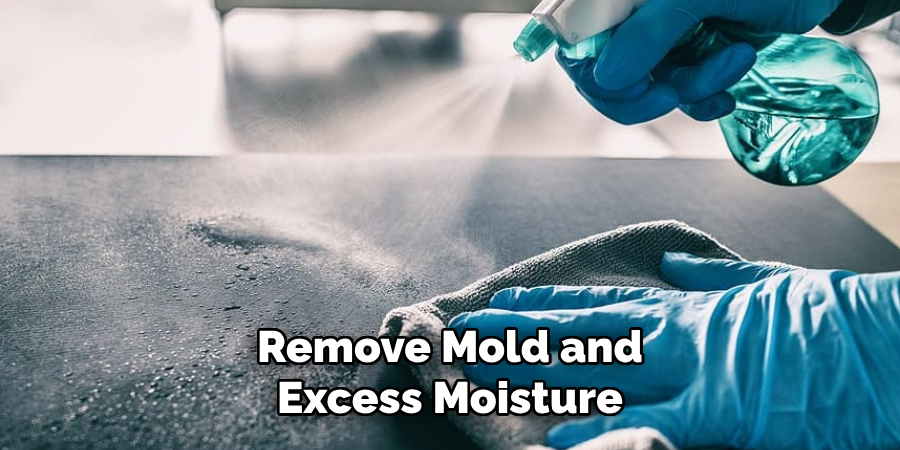
Isopropyl alcohol not only kills mold but also evaporates quickly, reducing the risk of moisture buildup. This method is particularly useful for fabrics that are prone to water damage, as it minimizes the amount of liquid applied to the sofa.
9. Tea Tree Oil Solution
Tea tree oil is a natural antifungal and antibacterial agent that is effective in removing mold from fabric sofas. To create a tea tree oil solution, mix one teaspoon of tea tree oil with one cup of water in a spray bottle. Shake well and spray the solution onto the moldy areas.
Allow it to sit for at least an hour before wiping the area with a clean cloth. Tea tree oil has a strong scent that may linger for a few days, but it effectively kills mold spores and prevents their return. This natural remedy is a great option for those looking for an environmentally friendly and non-toxic solution to mold removal.
10. Professional Cleaning Services
When mold infestation is extensive or persistent, it may be best to seek professional cleaning services. Professional cleaners have specialized equipment and expertise to thoroughly clean and sanitize fabric sofas, removing mold and preventing its recurrence. They can assess the extent of mold damage and apply appropriate treatments without risking damage to the fabric.
Additionally, professional cleaning can often address underlying issues that may contribute to mold growth, such as hidden moisture problems. Investing in professional cleaning ensures that your sofa is not only free from mold but also safe and hygienic for continued use.
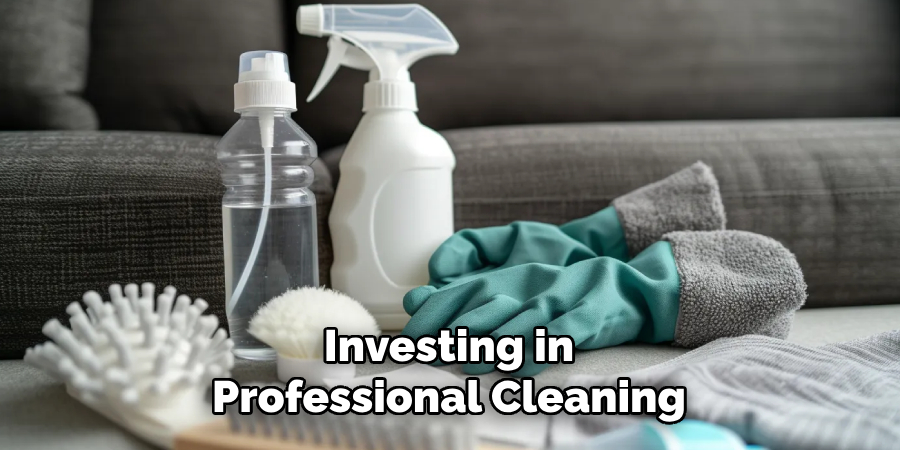
Conclusion
Mold on a fabric sofa can be a challenging issue, but with the right methods and regular maintenance, it is possible to keep your furniture clean and mold-free. The ten methods outlined—identifying the mold, vacuuming the sofa, using a mild detergent solution, applying white vinegar, hydrogen peroxide treatment, baking soda solution, sunlight exposure, using alcohol solution, tea tree oil solution, and seeking professional cleaning services—offer a comprehensive approach to tackling mold. Thanks for reading, and we hope this has given you some inspiration on how to remove mold from fabric sofa!
